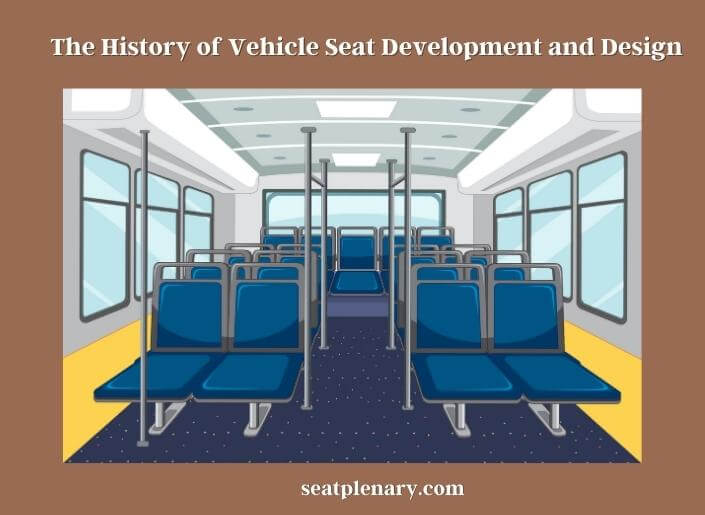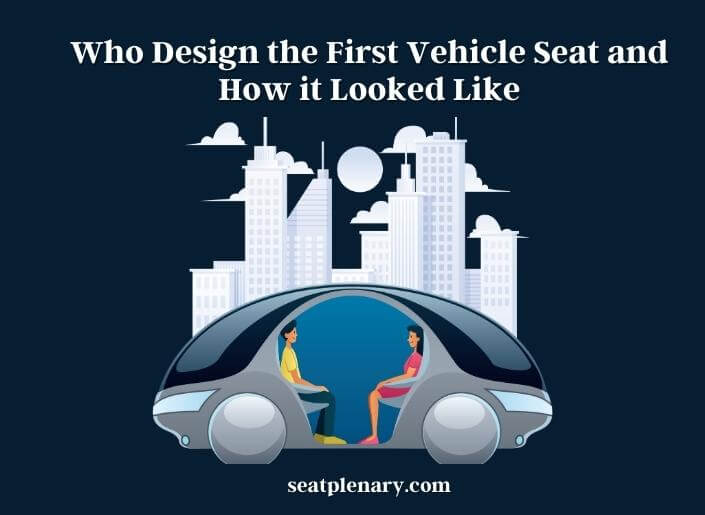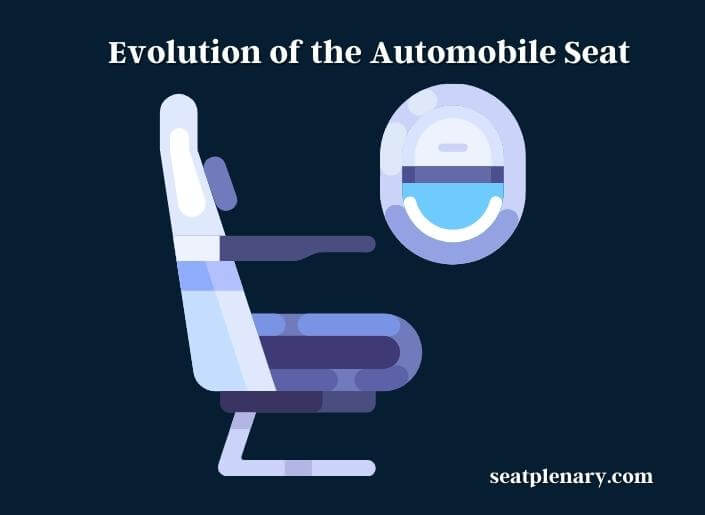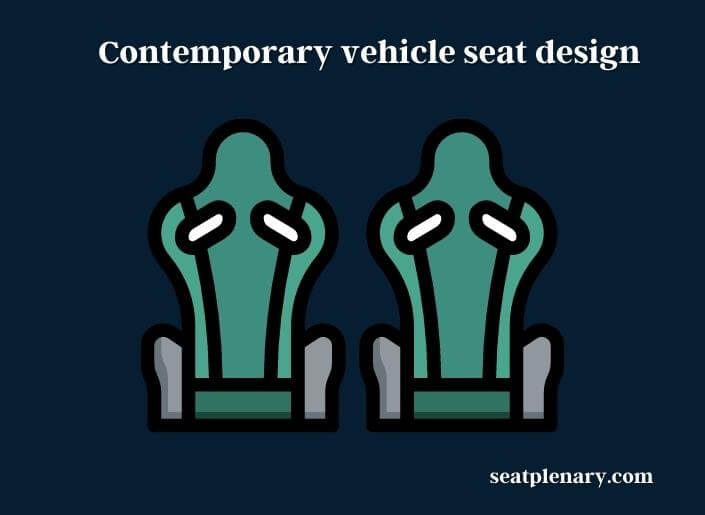Vehicle seats are an integral part of the transportation industry. They provide comfort and safety for passengers during long journeys, and as such, they have been a crucial area of development and innovation in the automotive industry. Over the years, vehicle seat design has undergone significant changes and improvements, from the earliest horse-drawn carriage seats to the latest automobile models.

Since the dawn of the automobile, the development of vehicle seating has been an integral part of the car industry. While early automobiles lacked even the most basic of comforts, modern cars come equipped with advanced features to keep passengers comfortable and safe. The first vehicle seating was a simple bench, designed to accommodate several passengers.
This seating was constructed of wood and upholstery, offering little in the way of comfort or safety. In the 1920s, however, car manufacturers began to focus on comfort, introducing designs that featured reclining, adjustable, and even swiveling seats. These features allowed for greater adjustability and comfort, which made long-distance travel in the car much more enjoyable. Safety has also been an important factor in the development of vehicle seating.
In the 1950s, seatbelts were introduced in order to protect passengers in the event of an accident. Over the years, seatbelts have become more sophisticated, incorporating lap belts, shoulder belts, and even airbags for added protection. Car manufacturers have also incorporated padding and other materials into modern seat designs in order to increase impact protection and occupant comfort.
Definition of the Vehicle Seat
A vehicle seat is a structure designed to provide seating for one or more occupants in a motor vehicle, such as a car, truck, van, or bus. Vehicle seats are typically adjustable, allowing for the forward and rearward movement of the seat relative to the direction of travel, as well as for the ability to recline or tilt the seat back.
Vehicle seats are typically equipped with safety features such as headrests, shoulder straps, armrests, and lumbar support, as well as other comfort features such as seat heaters, ventilation, and massage. Vehicle seats are typically made from a variety of materials, including foam, leather, fabric, and plastic.
What is the Role and Evolution of the Driver’s Seat in Vehicle Seat Development and Design?
In the realm of vehicle seat development and design, the seat beside the driver holds great significance. Over the years, its role has evolved to accommodate the needs of drivers in terms of comfort, ergonomics, and safety. From the early simplistic designs to the advanced adjustable seats of today, the evolution of the driver’s seat reflects an unwavering commitment to enhance the overall driving experience.
Who Design the First Vehicle Seat and How it Looked Like!
The first vehicle seat was designed by the American inventor George A. Seib in the late 19th century. Seib was a carriage maker and designed the first vehicle seat to be used in horse-drawn vehicles.

The seat was made of wood and upholstered in leather. It was designed to provide comfort and support for the occupants of the vehicle, and it featured a reclining backrest that allowed riders to adjust their posture as they rode.
The seat also featured a footrest, armrests, and a headrest. It was adjustable to fit different sizes of riders and was designed to be strong and durable. The seat was also designed to be easily removed and installed in different vehicles. Seib’s design was revolutionary and it became the standard for vehicle seats for the next century.
Early Vehicle Seats
In the early days of transportation, vehicle seats were simple and functional, designed to provide a place for passengers to sit during a journey. The earliest forms of vehicle seats can be traced back to horse-drawn carriages. These carriages had basic wooden benches or chairs that were mounted on the carriage’s floor. While these seats were adequate for short trips, they were not designed for comfort, and longer journeys could be uncomfortable and even painful.
As transportation technology evolved, so too did the materials used for seats. By the early 1900s, the advent of the automobile brought significant changes to vehicle seat design. Early car seats were made from padded leather and were still quite basic in their design. However, with the rise of mass production techniques, manufacturers began to experiment with new materials and designs for seats.
In the 1920s, manufacturers began to incorporate springs and cushioning into seats, providing a more comfortable ride for passengers. Over time, vehicle seats became more advanced, with the development of reclining seats, adjustable headrests, and seat height adjusters. By the mid-20th century, car seats had become much more comfortable, with the introduction of foam cushioning and ergonomic design.
Despite these advancements, early vehicle seats still had many limitations. They were often rigid and could not be adjusted to suit different passengers. Safety was not a significant consideration, and there were no seat belts or other safety features to protect passengers in the event of an accident.
Early vehicle seats were functional but not particularly comfortable or safe. As transportation technology progressed, engineers and designers began to focus more on improving the comfort and safety of vehicle seats, leading to significant advancements in seat design and functionality over the years.
Evolution of the Automobile Seat
The automobile seat has come a long way since the early days of the automobile. In the early years, cars did not even have seats as we know them today. Instead, passengers had to sit on benches or stools. As cars became more popular and sophisticated, so did the seats.
One of the earliest developments in the evolution of the automobile seat was the addition of backrests. This allowed passengers to sit more comfortably and provided support for their backs. The next major development was the introduction of adjustable seats. This allowed drivers and passengers to adjust the seat to their preferred position, making for a more comfortable ride.

In the 1920s and 1930s, bucket seats were introduced. These were designed to provide better support for drivers during high-speed turns and maneuvers. Bucket seats were also more stylish than traditional seats and became a popular feature in sports cars and muscle cars.
In the 1960s and 1970s, safety became a major concern in the automotive industry. Seat belts were introduced, and seats were designed to better protect passengers in the event of a crash. Seats were also designed to absorb impact and reduce the risk of injury.
Today, the automobile seat continues to evolve. Many cars now come equipped with heated and ventilated seats, massage functions, and other comfort features. Seats are also becoming more sophisticated, with sensors that can detect the driver’s posture and adjust the seat accordingly.
Contemporary Vehicle Seat Design
In today’s vehicles, seat design has become increasingly important in order to provide a comfortable and safe driving experience. Contemporary vehicle seat design focuses on the ergonomics, safety, and comfort of the driver.

Ergonomics are key when considering contemporary vehicle seat design. The goal is to provide the driver with an ideal driving position that allows them to reach all the controls without straining or feeling uncomfortable.
The seat should be adjustable to accommodate drivers of different sizes and heights and should provide proper lumbar support. The seat should also be adjustable to allow drivers to find a comfortable driving position.
Safety is also a key factor when considering contemporary vehicle seat design. The seat should be designed to provide the driver with adequate protection in the event of an accident. The seat should be able to withstand forces from a crash and keep the driver from sliding out of the seat. The seat should also provide adequate side-impact protection and be equipped with headrests to reduce the risk of whiplash.
Comfort is an important factor in contemporary vehicle seat design. The seat should be designed to provide maximum support and comfort for long trips.
Future of Vehicle Seat Design
The future of vehicle seat design is bright and holds immense potential for creating a comfortable and safe experience for drivers and passengers alike. With the advent of advanced technologies, such as self-driving cars, autonomous driving systems, and active safety systems, designers will be able to create more innovative and ergonomic seating solutions for all kinds of vehicles.
To meet the demands of the modern driver, designers will likely focus on creating seating systems that are adjustable and customizable, allowing for a more personalized driving experience. This could include features such as heated and cooled seats, adjustable lumbar support, and even massage functions. The use of high-tech materials such as memory foam and advanced cushioning could provide a more comfortable and supportive ride.
Designers will also be able to incorporate safety features into the seat design to ensure a safe and secure ride. This could include airbags, seatbelt positioning systems, and other active safety systems that would help to protect passengers in the event of an accident. Vehicle seats will also be designed to be lightweight and durable, so as to reduce the overall weight of the car.
For comfort and safety, designers will also be able to create aesthetically pleasing seats that can be customized to match a vehicle’s interior design. This could include luxury options such as leather seats, wood accents, and other high-end finishes.
As technology continues to progress, the possibilities for vehicle seat design will only increase, allowing for more innovative and stylish solutions that will make driving more enjoyable for everyone.
How has the history of vehicle seat development influenced the design of modern seat accessories?
The history of vehicle seat development has greatly influenced the design of modern seat accessories to enhance your vehicle seats. From the early bench-style seats to the ergonomic bucket seats, innovations have focused on improving comfort, support, and style. Today, seat accessories like lumbar support cushions and seat covers continue this trend.
How Have Past Developments in Vehicle Seat Design Influenced Future Advancements?
Past developments in vehicle seat design have greatly influenced future vehicle seat advancements. Innovations in materials, ergonomics, and technology have led to more comfortable and safer seating options. As technology continues to improve, future vehicle seat advancements will only become more advanced and tailored to the needs of drivers and passengers.
Final Thoughts
The development and design of vehicle seats have come a long way since the first cars were created. From the simple benches of the early 1900s to the modern, ergonomic seats of today, vehicle seats have evolved to better meet the needs of drivers and passengers.
The safety of vehicle seats has increased significantly, as materials and designs have improved over the years. Automotive seats have also become increasingly comfortable and adjustable, allowing drivers and passengers to customize their seating position to their preferences.
Today, vehicle seats are an integral part of the automobile experience. With their advanced technology, comfort, and safety features, vehicle seats provide drivers and passengers with a comfortable and secure ride. The history of vehicle seat development and design has allowed the automotive industry to produce some of the most advanced and comfortable vehicle seats in the world.
